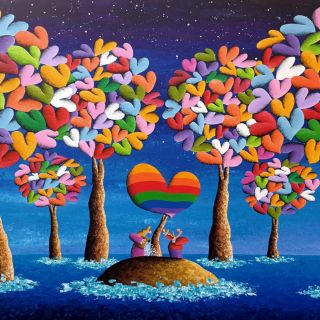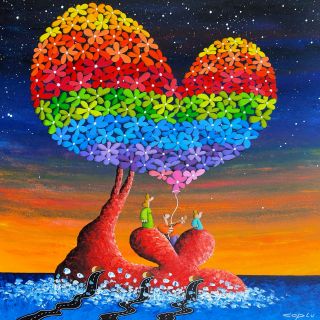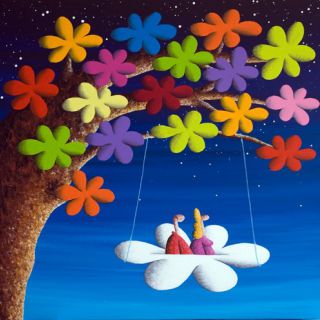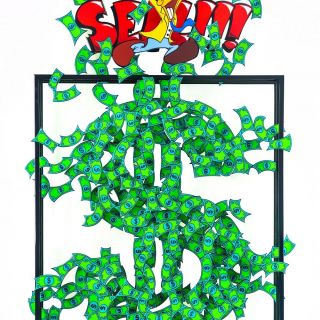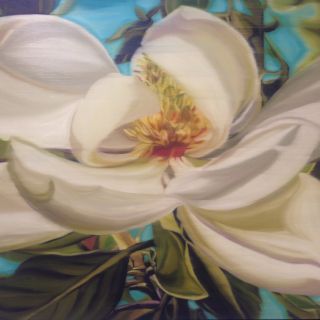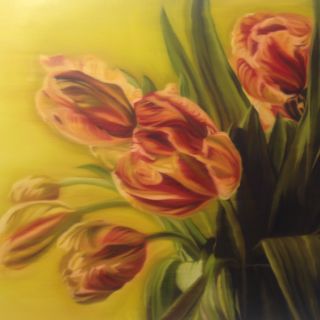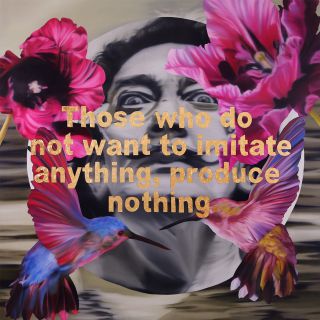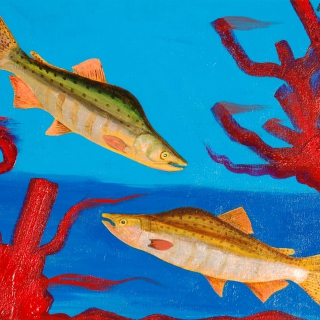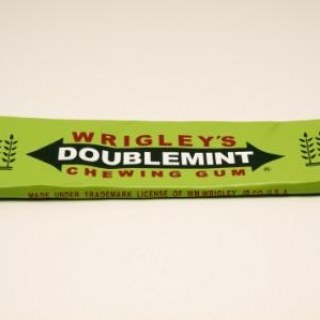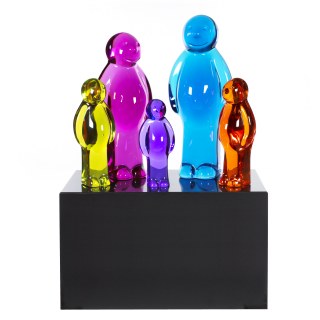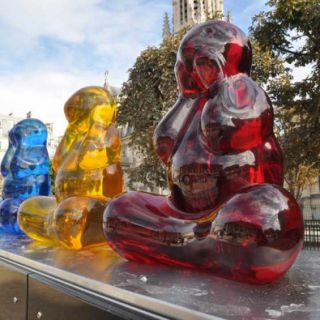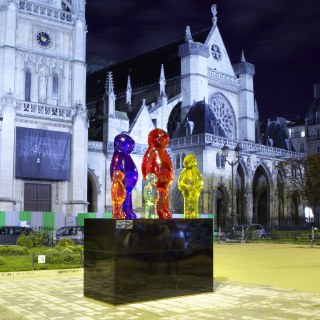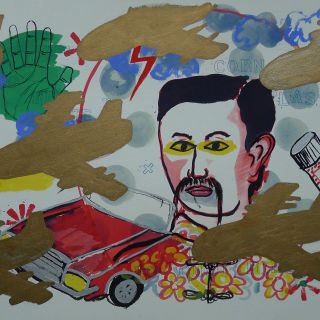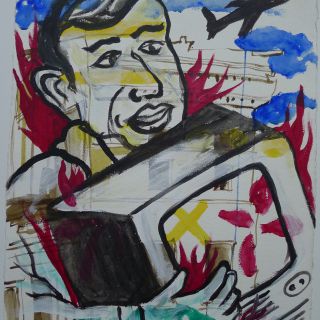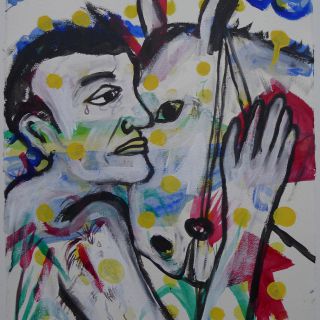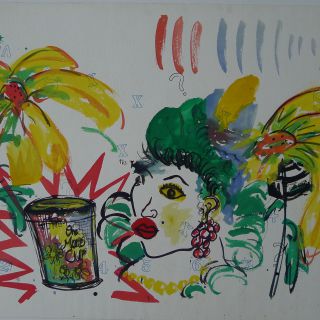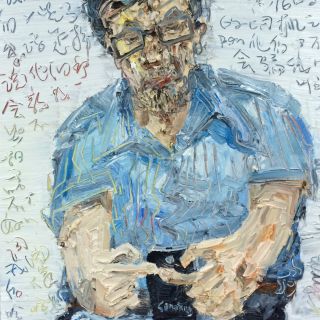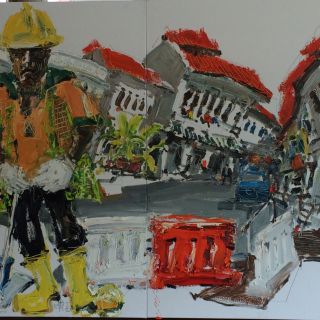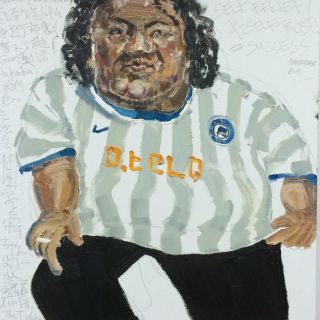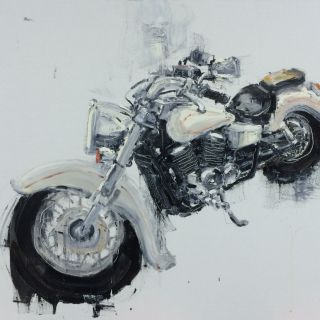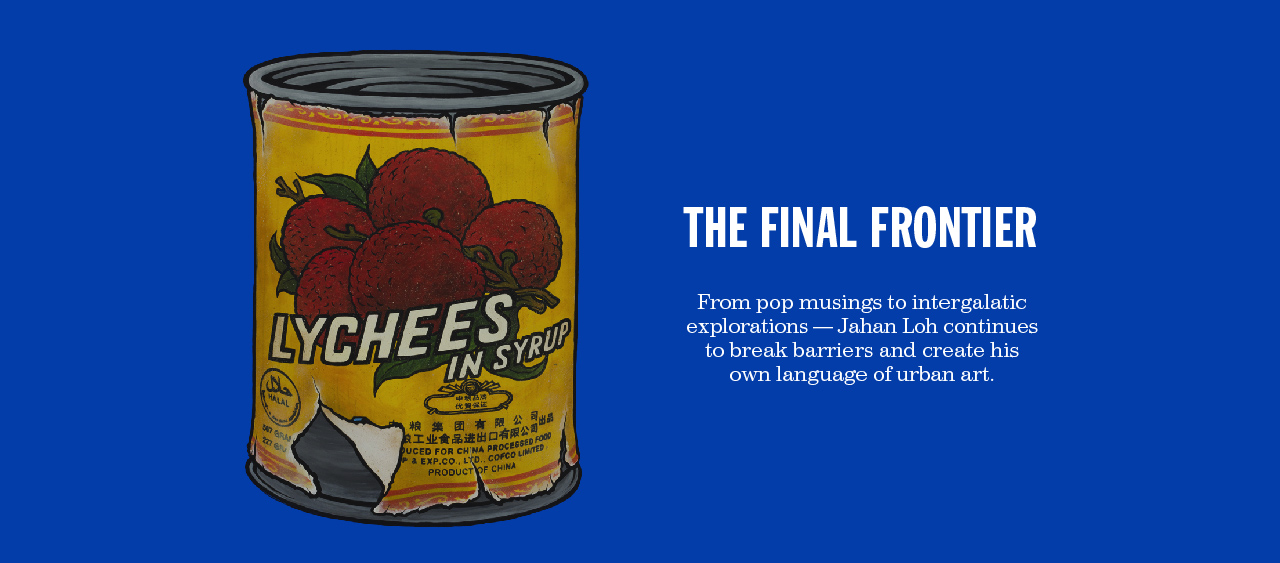
Born in 1976, Jahan Loh (羅傑瀚) began his forays into street art in the early '90s. Since then, his aesthetics have evolved into an amalgamation of street and contemporary art. From neo-pop girls to intergalactic heroes, cape crusaders to dragon chasers, Jahan Loh's world of graphic marvels is replete with popular imagery, acid-washed dreamscapes and cryptic wordplay. An artist of many labels and an agent of counterculture, Loh's visual language places him at the intersection of east and west, fine art and street art.
Biography 
Biography
Born in 1976, Jahan Loh (羅傑瀚) began his forays into street art in the early '90s. Since then, his aesthetics have evolved into an amalgamation of street and contemporary art. From neo-pop girls to intergalactic heroes, cape crusaders to dragon chasers, Jahan Loh's world of graphic marvels is replete with popular imagery, acid-washed dreamscapes and cryptic wordplay. An artist of many labels and an agent of counterculture, Loh's visual language places him at the intersection of east and west, fine art and street art.
Acknowledged as one of the key artists who made Singapore pop art international, Jahan was selected for 8Q-RATE, the opening exhibition of Singapore's 8Q museum in 2008. His works have been featured in art exhibitions all over the world in cities such as New York, Glasgow, Melbourne, Shanghai, Taipei, Hong Kong, Kuala Lumpur, and China for its first street art showcase in Beijing. When he's not in his studio painting, he can be found leaving his mark around the world, extending his art onto products.
Acknowledged as one of the key artists who made Singapore pop art international, Jahan was selected for 8Q-RATE, the opening exhibition of Singapore's 8Q museum in 2008. His works have been featured in art exhibitions all over the world in cities such as New York, Glasgow, Melbourne, Shanghai, Taipei, Hong Kong, Kuala Lumpur, and China for its first street art showcase in Beijing. When he's not in his studio painting, he can be found leaving his mark around the world, extending his art onto products.
Exhibitions 
Exhibitions
Exhibitions held in Hong Kong, Beijing, Taipei, Kuala Lumpur, and Melbourne.
Selected exhibitions also include::
2007
"No Comply", Melbourne;
2006
"Collision 1&2", Singapore;
"Sketch", Taipei;
2003
"Cherry Pop", Singapore.
Selected exhibitions also include::
2007
"No Comply", Melbourne;
2006
"Collision 1&2", Singapore;
"Sketch", Taipei;
2003
"Cherry Pop", Singapore.
Critique 
Critique
Jahan Loh: Universal Icons - from Graffiti to Graphic Angels
By Alexandra Chang
Counter-Cultural Undercurrents
The A.K.A alter-ego is one that graffiti artists use to identify themselves in their community and beyond, and the notion of an alter ego with its connotative connections to caped crusaders as well as graffiti taxonomy is one that Singapore-born artist Jahan Loh adopted early on in his career. Working for a newspaper publishing company by day and finding time to paint in the street by night, Loh was known as Dazed-J, often drawing a robot or comic graffiti figure wearing the heavy-rimmed glasses associated with Clark Kent, but also the artist’s own eyewear, which came to be a signifier ID in his early graffiti.
As an artist, Loh hails as an underdog on several counts. He turned down a career in law for one in art, earning a scholarship to Singapore's Lasalle-SIA College of the Arts. The overbearing focus on abstraction in school at the time stood in opposition to his interest in pop cultural icons and figurative forms. In an attempt to come to terms with the constraints of his situation, he created work which incorporated a negative evaluation from his lecturer and a series of past critiques into his paintings, citing Basquiat as his influence at the time. His work won the attention of the Nokia Art Award committee and garnered the ire of the art department - which barely passed him.
In 2002, Loh broke his scholarship bond and left The Straits Times newspaper to begin a business partnership in Taiwan. In 2004, he started his company Invasion Studios that permitted the artist to delve into the world of hip hop, vinyl toys and music animations. An innovator during the start of the craze that would be collectible sneakers and toys, he recalls: “Thinking back, I didn’t think the whole thing would become so big… but back then we were still a very small community and people were hunting for old sneakers.” Loh began his foray into vinyl toys with Jakuan Melendez of the former 360 Toy Group on Eldridge Street in New York’s Lower East Side. At the time, the area was just becoming populated with boutiques like Alife and Staple Design, and Kid Robot was transitioning from MiniDisco and beginning to sell toys from Japan and China. Vinyl toys came to a fresh audience and newly-developed collector base interested in a lifestyle that incorporated art into it. “Toys have always gained another dimension when people touch them and play with them,” states the artist.
For Loh, the initial act of creating a toy was an extension of his passion for collecting toys such as 12-inch toys and Star Wars figurines. Like a specific toy or item from childhood, each iconic image carried with it shifting meanings and as the artist notes, people bear “a lot of attachment to these toys" as they represent "different parts of life, different experiences.” The nostalgia connected with his collecting could later be found in Loh’s series of paintings of objects from youth and innocence, such as his alternative Hello Kitty paintings from his Cherry Poke series or other "kawaii" depictions of children, with inspiration drawn from a multinational Chinese consumer electronics brand mascot. For each of these works, the subjects are haunted by a notion of a balance of innocence and knowledge, power and naiveté — a childhood layered with an adult point of view and requisite worries.
In the fiberglass work Hello Pussy (2010), the blue-toned Hello Kitty character is surrounded by a pool of hot pink blood. When brought into the framework of the larger range of the artist’s works, this sculpture parallels the overtly sexualized squatting blue fiberglass female form, surrounded in a red plastic pool of menstrual blood in Cherry Pop Girl from his Cherry Pop series. In Hello Pussy, the work shifts from a more straightforward adolescent gaze to female sexuality, and signals a play on innocence and the layered and multivalent points of view the artist is able to gather through compressing many moments of time into a single frame — signified by a childhood icon passing into adulthood.
A similar theme is expressed through Loh’s diptych Sister in Arms/Brother in Arms (2010), depictions of two sets of children in which the left portion of the work is a pair of cherubic manga-inspired girls and the portion on the right depicts a similarly-styled pair of boys. The works exude a perceived sense of childhood innocence, each pair holding an ice cream cone and displaying an energetic thumbs up — possibly young Adams and Eves in paradise — bringing along with them a hint toward an impending arrival of paradise lost. The past, present and future combine.
From Outside In
In the 1990s and the decade that followed, the influence of graffiti was embraced internationally as a counterculture movement that developed to be more interwoven with subcultures and market branding. As a symbolic outlet for artistic and youth countercultural expression and growing up with idols including Crash and Daze, the idea of the 1970s and '80s graffiti movement with undercurrents of socio-political and economic protest became a point of connection amongst youth internationally. This remained a vital part of Loh’s inspiration and identity.
In 2005, Loh traveled to New York to visit the artist Crash (his childhood idol) in order to prepare for the exhibitions Collision I and Collision II at Jendela Visual Arts Space at Esplanade in Singapore. While he was in New York, he was also introduced to artist Phase 2. Loh remembers Phase 2 as sparking his initial interest in thinking through his Singaporean identity in relation to his artistic production. The artist recalls:“He's asking me, ‘You’re Asian right, but you paint like what we did in the ’70s. So where is your identity?’ When he said that, he really made me think, ‘It’s true that I’m Chinese I’m Singaporean, but a lot of people in China think I’m Taiwanese, so what am I?’ There was this period when I was really thinking hard.”
Coming out of this experience, Loh began to hold his paintbrush in the Chinese mao bi style and paint his script-based work in black and white, referencing Chinese calligraphic tradition. Yet this comprised only a portion of Loh’s artistic affinities and intersections as an artist trained on the streets in Singapore, Tokyo and Taiwan. He was also shaped by art school, the influence of graffiti artists from the 1970s and 1980s in New York City and the international phenomenon of toy, manga and comic book culture.
After struggling within the confines of art world and national labels of 'graffiti,' 'gallery artist,' 'design,' 'fine art,' and even his own cultural identity, Loh found himself living amidst overlapping identities that could be categorised in multiple ways. After spending nearly nine years in Taiwan, Loh returned to Singapore in 2011 and created the works for the exhibition Cherry Poke: Reconstituted Philosophies at Jendala Visual Arts Space. He recalls of the time: “I wanted to break away from my old figurative style and create a series of still life works which defined my nationality as a Singaporean. This was because I felt that after spending eight years in Taipei, even some China art magazines wrote that I was Taiwanese.”
The artist utilized the iconic pink, yellow and blue Ma Ling brand pork luncheon meat can as a stand-in for the mixture of cultural signifiers in Singaporean identities and their everyday lives. In the installation for the exhibition, the artist was able to request for the company to collaborate on the project and produce special editions of the cans for the show labeled entitled Reconstituted Philosophies. Surrounding the gallery walls, Loh hung paintings of individual cans, some with tears on the label, some oval and rectangular-shapde, each with their own differences. A sculpture (the size of a coffee table) of an unlabelled aluminium can perched atop four pig legs, welcomed the gallery-goer next to a vitrine filled with the special edition cans stacked within. The exhibition troubled the viewer with questions as to the purveyors of identity and consumption of such labels. In the case of Loh, his questions in creating the work led to the exploration of his own Singaporean identity and its transcultural intermingling.
The works were made in response to an increased wave of anti-Chinese sentiment that was palpable to the artist upon his return to Singapore, due to perceived immigration-related job competition and higher costs of real estate. Loh states: “I realized that a lot of us are from China, our ancestry is Chinese, and so is luncheon meat. Everyone in Singapore think it’s local produce. I realized that although it is made in China, it’s like Singaporean culture. I thought it was pretty fun to use the luncheon meat to talk about culture in Singapore, everything is pretty much contained, but made up of different parts.”
Rising Heroes - Extraterrestrial Potentiality
Icons are seen as infused with meaning and held with universality, but such icons also shift their meaning depending on contextualization. Loh notes: “The deconstruction of popular icons in my new series was done in order to perform not just a critical or philosophical task but also an intergalactic one—to alter our perception of reality and open up new spaces of being and becoming; the possibility of new forms, new bodies and new minds.
Fragmented imagery from different popular culture sources offers a profoundly transformative vision, one which blurs the categories between good and bad, the profane and the sacred, as neither side ever prevails due to each containing the other in an eternal and natural check or balance.”
With the artist’s new contextualization of well known iconography and pop cultural references, the images shift in meaning to provide a space for iteration of what may be culturally unalterable due to politics or societal constraints. The images become a language and their composition, a syntax for possible potential interpretations.
With the recent works Agent M (2010), Agent R (2010), and Angel G (2010), as well as his paintings The Risen (2013) and a sculpture of the same title - a large-scale work designed from brass with high copper content to replicate 24-carat gold - Loh is referencing the religious personages of the archangels Michael, Raphael, Gabriel and Christ respectively. Harkening back to Renaissance religious art iconography, the works are a call to established art history, pulling with them the weight of the master narrative of art historical iconography, art world acceptance and the perceived universality of such canonical imagery. Yet, the pop culture imagery and reference to the archangels and Christ as extraterrestrial beings or “alien” is a creative turn spurred on by the artist’s interest in the work of Jack Kirby, Asian manga and other Marvel comics Loh grew up with. The icon becomes not only one of popular lexicon, but is doubly layered. The canonical hero also serves as hero derived from graphic comics. It incorporates elements of the archangels of knowledge, death, life, resurrection, healing, mercy, repentance, annunciation, vengeance and revelation. The canonical Christ figure and agents or archangels are also equally the underdogs or outsiders looking in, from the point of view of the “alien.” Instead of a one-tiered dimensionality, the implied hero figure is one that contains a complex layering of description.
The alien bodies rendered by the artist in The Risen paintings and cast into the sculpture The Risen exhibits a stylized perspective focused on the powerful musculature of the anatomy, an element found in graphic comic imagery as well as in the works of Caravaggio. The bodies are reclined in a pose as if taken from the cross, yet as the titles imply, they are also rising. The extraterrestrial hero becomes at once the Christ figure, or Prometheus, and harkens as a warning and to the arriving potentiality of what is to come and might be.
The popular imagery that Loh incorporates in his work are icons and symbols that have already imbued within them, the bridging of cultural boundaries, bringing with them cultural significances. Loh is himself a transnational artist who has lived and worked in multiple countries. Yet, there remains for Loh, the importance of placing the works of his artistic production within his identity of a Singaporean artist, at the same time recognizing their transcultural mix. This idea comes together most acutely in his latest series of works.
"Wizard of Oz" (2013) depicts a centrally placed prominent lion figure, much like Aslan from The Chronicles of Narnia - a popular icon engendering notions of innocence, magic, knowledge, and power. Yet perched on his back is a character resembling Dr. Zaius from Planet of the Apes, who was the Chief Defender of the Faith and keeper of the scrolls of knowledge. He is painted in a style and pose reminiscent of social realism with his arm extended forward in a salute. While there is site-specific significance to the work, in terms of being located and produced in Singapore, it can also be deciphered more universally as the tension between knowledge, faith and science in the modern world. As a symbol of Singapore and the “Lion City,” the lion here has an additional significance and is seemingly held in check by what the artist notes is “ a monkey on its back.”
With Loh’s work, the potential of identity and cultural significance exists in multiple ways through the language of shifting meanings that surround iconic imagery he uses within both local and transnational framing.
Point/Counterpoint: Time, Place, Image and Community
Transfixed within transcultural landscapes of multiple contexts for his graphic, comic-based and iconic imagery, Loh locates a positioning that crosses and is able to account for a multiplicity of intersecting narratives that play at a counterpoint within his works. The scaffolding of communities of affinities and definition, nationality and linear temporal framing become broken through Loh’s aesthetics of visuality — layering shifting meanings, he breaks down the artificial categorizations of graffiti, pop cultural and religious iconography and references to the art historical master narrative. Instead, what he reveals is the everyday realities of this counterpoint of themes, each playing its own trajectory, adding, framing and reframing the landscape of the work in terms of how images are received, intended for reception and shaped and coaxed by the artist to reveal new possible direction and indication.
His works additionally bring with them a temporality that amasses experience and histories within single works. At times, these exude nostalgia and make reference to the transition from childhood to knowledge amidst blurred boundaries of self-definition and realization — replete with emancipations, potentialities, and constraints.
Together, The Risen works, Wizard of Oz, his Cherry Poke and Reconstituted Identities point to an expanded vantage of urban realities and modernity and what scholar Nicholas Mirzoeff calls the aesthetics of power, in which the system of visuality of the aesthetics of power reveal the power complex itself. [1] With Loh, the works function as this “check” or “balance” of power that become a revelation of the power structures of the system of the everyday. His work stands at the juncture of the contemporary and avant-garde. Immersed in multiple historical frameworks and possible layers of meaning, Loh signals to a constantly arriving possibility through the point of revelation where past, present and future become joined.
Alexandra Chang is Curator of Special Projects and Director of Global Arts Programs, New York University - Asian/Pacific/American Institute
By Alexandra Chang
Counter-Cultural Undercurrents
The A.K.A alter-ego is one that graffiti artists use to identify themselves in their community and beyond, and the notion of an alter ego with its connotative connections to caped crusaders as well as graffiti taxonomy is one that Singapore-born artist Jahan Loh adopted early on in his career. Working for a newspaper publishing company by day and finding time to paint in the street by night, Loh was known as Dazed-J, often drawing a robot or comic graffiti figure wearing the heavy-rimmed glasses associated with Clark Kent, but also the artist’s own eyewear, which came to be a signifier ID in his early graffiti.
As an artist, Loh hails as an underdog on several counts. He turned down a career in law for one in art, earning a scholarship to Singapore's Lasalle-SIA College of the Arts. The overbearing focus on abstraction in school at the time stood in opposition to his interest in pop cultural icons and figurative forms. In an attempt to come to terms with the constraints of his situation, he created work which incorporated a negative evaluation from his lecturer and a series of past critiques into his paintings, citing Basquiat as his influence at the time. His work won the attention of the Nokia Art Award committee and garnered the ire of the art department - which barely passed him.
In 2002, Loh broke his scholarship bond and left The Straits Times newspaper to begin a business partnership in Taiwan. In 2004, he started his company Invasion Studios that permitted the artist to delve into the world of hip hop, vinyl toys and music animations. An innovator during the start of the craze that would be collectible sneakers and toys, he recalls: “Thinking back, I didn’t think the whole thing would become so big… but back then we were still a very small community and people were hunting for old sneakers.” Loh began his foray into vinyl toys with Jakuan Melendez of the former 360 Toy Group on Eldridge Street in New York’s Lower East Side. At the time, the area was just becoming populated with boutiques like Alife and Staple Design, and Kid Robot was transitioning from MiniDisco and beginning to sell toys from Japan and China. Vinyl toys came to a fresh audience and newly-developed collector base interested in a lifestyle that incorporated art into it. “Toys have always gained another dimension when people touch them and play with them,” states the artist.
For Loh, the initial act of creating a toy was an extension of his passion for collecting toys such as 12-inch toys and Star Wars figurines. Like a specific toy or item from childhood, each iconic image carried with it shifting meanings and as the artist notes, people bear “a lot of attachment to these toys" as they represent "different parts of life, different experiences.” The nostalgia connected with his collecting could later be found in Loh’s series of paintings of objects from youth and innocence, such as his alternative Hello Kitty paintings from his Cherry Poke series or other "kawaii" depictions of children, with inspiration drawn from a multinational Chinese consumer electronics brand mascot. For each of these works, the subjects are haunted by a notion of a balance of innocence and knowledge, power and naiveté — a childhood layered with an adult point of view and requisite worries.
In the fiberglass work Hello Pussy (2010), the blue-toned Hello Kitty character is surrounded by a pool of hot pink blood. When brought into the framework of the larger range of the artist’s works, this sculpture parallels the overtly sexualized squatting blue fiberglass female form, surrounded in a red plastic pool of menstrual blood in Cherry Pop Girl from his Cherry Pop series. In Hello Pussy, the work shifts from a more straightforward adolescent gaze to female sexuality, and signals a play on innocence and the layered and multivalent points of view the artist is able to gather through compressing many moments of time into a single frame — signified by a childhood icon passing into adulthood.
A similar theme is expressed through Loh’s diptych Sister in Arms/Brother in Arms (2010), depictions of two sets of children in which the left portion of the work is a pair of cherubic manga-inspired girls and the portion on the right depicts a similarly-styled pair of boys. The works exude a perceived sense of childhood innocence, each pair holding an ice cream cone and displaying an energetic thumbs up — possibly young Adams and Eves in paradise — bringing along with them a hint toward an impending arrival of paradise lost. The past, present and future combine.
From Outside In
In the 1990s and the decade that followed, the influence of graffiti was embraced internationally as a counterculture movement that developed to be more interwoven with subcultures and market branding. As a symbolic outlet for artistic and youth countercultural expression and growing up with idols including Crash and Daze, the idea of the 1970s and '80s graffiti movement with undercurrents of socio-political and economic protest became a point of connection amongst youth internationally. This remained a vital part of Loh’s inspiration and identity.
In 2005, Loh traveled to New York to visit the artist Crash (his childhood idol) in order to prepare for the exhibitions Collision I and Collision II at Jendela Visual Arts Space at Esplanade in Singapore. While he was in New York, he was also introduced to artist Phase 2. Loh remembers Phase 2 as sparking his initial interest in thinking through his Singaporean identity in relation to his artistic production. The artist recalls:“He's asking me, ‘You’re Asian right, but you paint like what we did in the ’70s. So where is your identity?’ When he said that, he really made me think, ‘It’s true that I’m Chinese I’m Singaporean, but a lot of people in China think I’m Taiwanese, so what am I?’ There was this period when I was really thinking hard.”
Coming out of this experience, Loh began to hold his paintbrush in the Chinese mao bi style and paint his script-based work in black and white, referencing Chinese calligraphic tradition. Yet this comprised only a portion of Loh’s artistic affinities and intersections as an artist trained on the streets in Singapore, Tokyo and Taiwan. He was also shaped by art school, the influence of graffiti artists from the 1970s and 1980s in New York City and the international phenomenon of toy, manga and comic book culture.
After struggling within the confines of art world and national labels of 'graffiti,' 'gallery artist,' 'design,' 'fine art,' and even his own cultural identity, Loh found himself living amidst overlapping identities that could be categorised in multiple ways. After spending nearly nine years in Taiwan, Loh returned to Singapore in 2011 and created the works for the exhibition Cherry Poke: Reconstituted Philosophies at Jendala Visual Arts Space. He recalls of the time: “I wanted to break away from my old figurative style and create a series of still life works which defined my nationality as a Singaporean. This was because I felt that after spending eight years in Taipei, even some China art magazines wrote that I was Taiwanese.”
The artist utilized the iconic pink, yellow and blue Ma Ling brand pork luncheon meat can as a stand-in for the mixture of cultural signifiers in Singaporean identities and their everyday lives. In the installation for the exhibition, the artist was able to request for the company to collaborate on the project and produce special editions of the cans for the show labeled entitled Reconstituted Philosophies. Surrounding the gallery walls, Loh hung paintings of individual cans, some with tears on the label, some oval and rectangular-shapde, each with their own differences. A sculpture (the size of a coffee table) of an unlabelled aluminium can perched atop four pig legs, welcomed the gallery-goer next to a vitrine filled with the special edition cans stacked within. The exhibition troubled the viewer with questions as to the purveyors of identity and consumption of such labels. In the case of Loh, his questions in creating the work led to the exploration of his own Singaporean identity and its transcultural intermingling.
The works were made in response to an increased wave of anti-Chinese sentiment that was palpable to the artist upon his return to Singapore, due to perceived immigration-related job competition and higher costs of real estate. Loh states: “I realized that a lot of us are from China, our ancestry is Chinese, and so is luncheon meat. Everyone in Singapore think it’s local produce. I realized that although it is made in China, it’s like Singaporean culture. I thought it was pretty fun to use the luncheon meat to talk about culture in Singapore, everything is pretty much contained, but made up of different parts.”
Rising Heroes - Extraterrestrial Potentiality
Icons are seen as infused with meaning and held with universality, but such icons also shift their meaning depending on contextualization. Loh notes: “The deconstruction of popular icons in my new series was done in order to perform not just a critical or philosophical task but also an intergalactic one—to alter our perception of reality and open up new spaces of being and becoming; the possibility of new forms, new bodies and new minds.
Fragmented imagery from different popular culture sources offers a profoundly transformative vision, one which blurs the categories between good and bad, the profane and the sacred, as neither side ever prevails due to each containing the other in an eternal and natural check or balance.”
With the artist’s new contextualization of well known iconography and pop cultural references, the images shift in meaning to provide a space for iteration of what may be culturally unalterable due to politics or societal constraints. The images become a language and their composition, a syntax for possible potential interpretations.
With the recent works Agent M (2010), Agent R (2010), and Angel G (2010), as well as his paintings The Risen (2013) and a sculpture of the same title - a large-scale work designed from brass with high copper content to replicate 24-carat gold - Loh is referencing the religious personages of the archangels Michael, Raphael, Gabriel and Christ respectively. Harkening back to Renaissance religious art iconography, the works are a call to established art history, pulling with them the weight of the master narrative of art historical iconography, art world acceptance and the perceived universality of such canonical imagery. Yet, the pop culture imagery and reference to the archangels and Christ as extraterrestrial beings or “alien” is a creative turn spurred on by the artist’s interest in the work of Jack Kirby, Asian manga and other Marvel comics Loh grew up with. The icon becomes not only one of popular lexicon, but is doubly layered. The canonical hero also serves as hero derived from graphic comics. It incorporates elements of the archangels of knowledge, death, life, resurrection, healing, mercy, repentance, annunciation, vengeance and revelation. The canonical Christ figure and agents or archangels are also equally the underdogs or outsiders looking in, from the point of view of the “alien.” Instead of a one-tiered dimensionality, the implied hero figure is one that contains a complex layering of description.
The alien bodies rendered by the artist in The Risen paintings and cast into the sculpture The Risen exhibits a stylized perspective focused on the powerful musculature of the anatomy, an element found in graphic comic imagery as well as in the works of Caravaggio. The bodies are reclined in a pose as if taken from the cross, yet as the titles imply, they are also rising. The extraterrestrial hero becomes at once the Christ figure, or Prometheus, and harkens as a warning and to the arriving potentiality of what is to come and might be.
The popular imagery that Loh incorporates in his work are icons and symbols that have already imbued within them, the bridging of cultural boundaries, bringing with them cultural significances. Loh is himself a transnational artist who has lived and worked in multiple countries. Yet, there remains for Loh, the importance of placing the works of his artistic production within his identity of a Singaporean artist, at the same time recognizing their transcultural mix. This idea comes together most acutely in his latest series of works.
"Wizard of Oz" (2013) depicts a centrally placed prominent lion figure, much like Aslan from The Chronicles of Narnia - a popular icon engendering notions of innocence, magic, knowledge, and power. Yet perched on his back is a character resembling Dr. Zaius from Planet of the Apes, who was the Chief Defender of the Faith and keeper of the scrolls of knowledge. He is painted in a style and pose reminiscent of social realism with his arm extended forward in a salute. While there is site-specific significance to the work, in terms of being located and produced in Singapore, it can also be deciphered more universally as the tension between knowledge, faith and science in the modern world. As a symbol of Singapore and the “Lion City,” the lion here has an additional significance and is seemingly held in check by what the artist notes is “ a monkey on its back.”
With Loh’s work, the potential of identity and cultural significance exists in multiple ways through the language of shifting meanings that surround iconic imagery he uses within both local and transnational framing.
Point/Counterpoint: Time, Place, Image and Community
Transfixed within transcultural landscapes of multiple contexts for his graphic, comic-based and iconic imagery, Loh locates a positioning that crosses and is able to account for a multiplicity of intersecting narratives that play at a counterpoint within his works. The scaffolding of communities of affinities and definition, nationality and linear temporal framing become broken through Loh’s aesthetics of visuality — layering shifting meanings, he breaks down the artificial categorizations of graffiti, pop cultural and religious iconography and references to the art historical master narrative. Instead, what he reveals is the everyday realities of this counterpoint of themes, each playing its own trajectory, adding, framing and reframing the landscape of the work in terms of how images are received, intended for reception and shaped and coaxed by the artist to reveal new possible direction and indication.
His works additionally bring with them a temporality that amasses experience and histories within single works. At times, these exude nostalgia and make reference to the transition from childhood to knowledge amidst blurred boundaries of self-definition and realization — replete with emancipations, potentialities, and constraints.
Together, The Risen works, Wizard of Oz, his Cherry Poke and Reconstituted Identities point to an expanded vantage of urban realities and modernity and what scholar Nicholas Mirzoeff calls the aesthetics of power, in which the system of visuality of the aesthetics of power reveal the power complex itself. [1] With Loh, the works function as this “check” or “balance” of power that become a revelation of the power structures of the system of the everyday. His work stands at the juncture of the contemporary and avant-garde. Immersed in multiple historical frameworks and possible layers of meaning, Loh signals to a constantly arriving possibility through the point of revelation where past, present and future become joined.
Alexandra Chang is Curator of Special Projects and Director of Global Arts Programs, New York University - Asian/Pacific/American Institute
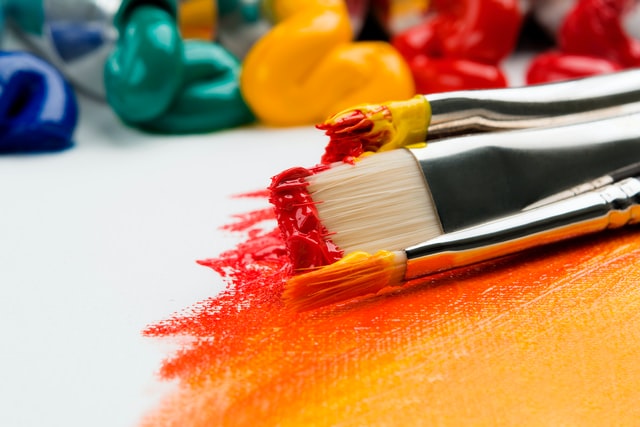
Stay connected.
Sign up to our newsletter for updates on new arrivals and exhibitions


